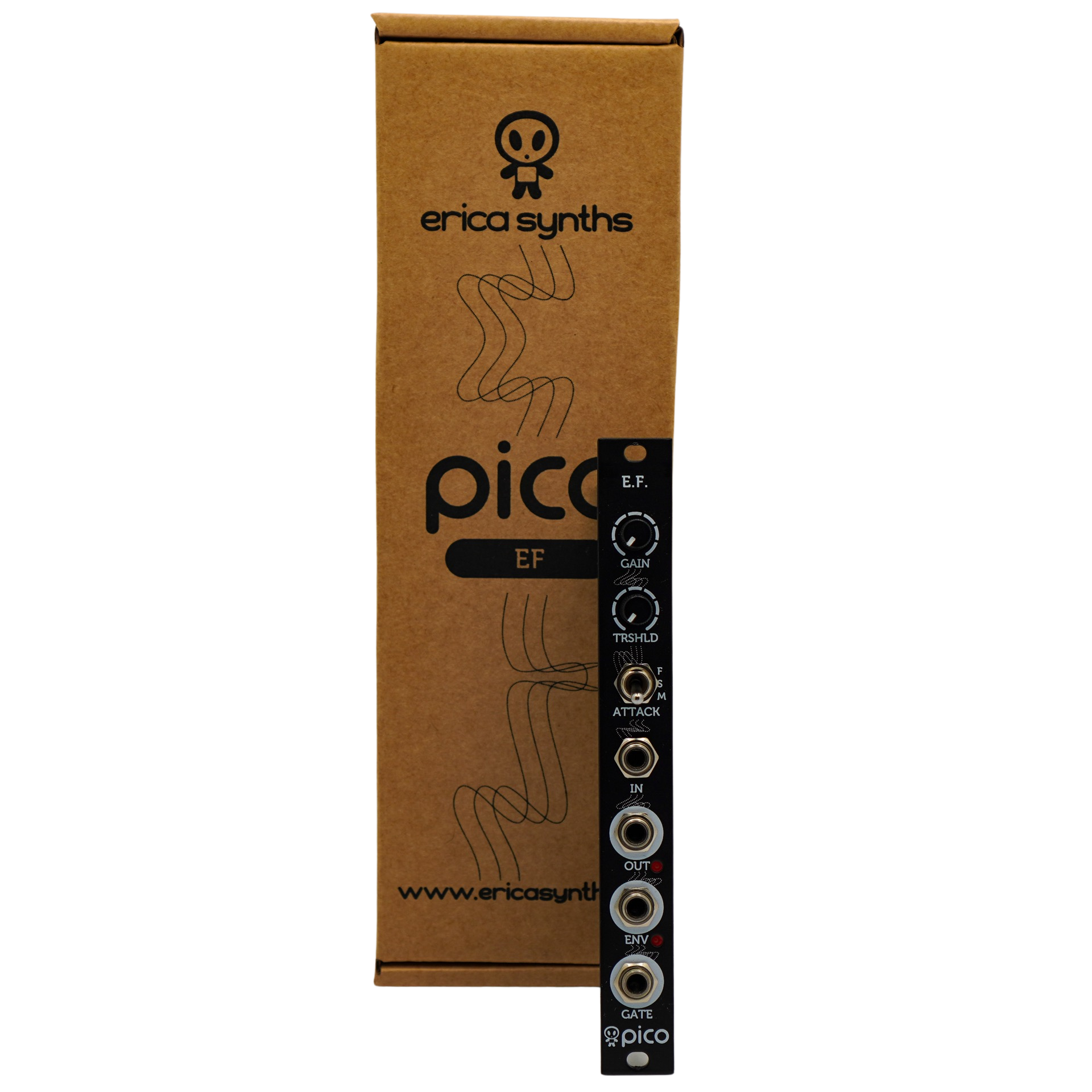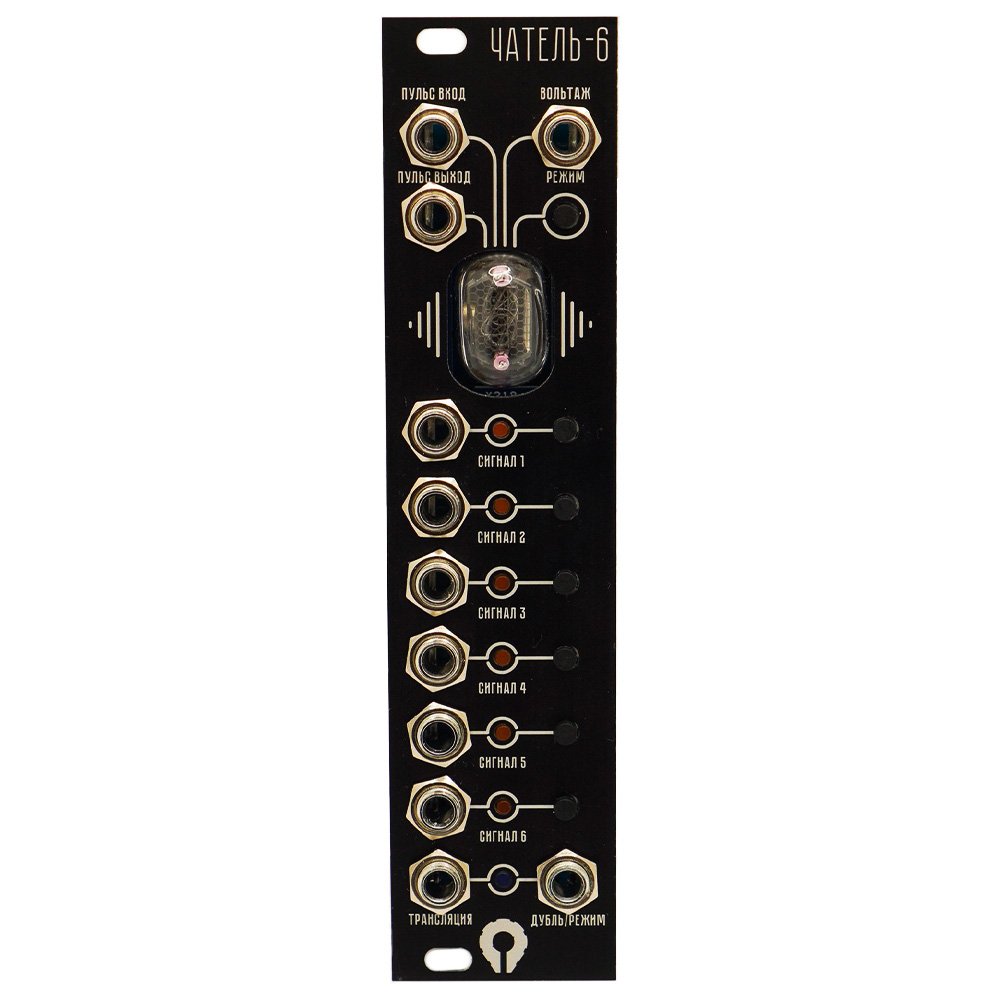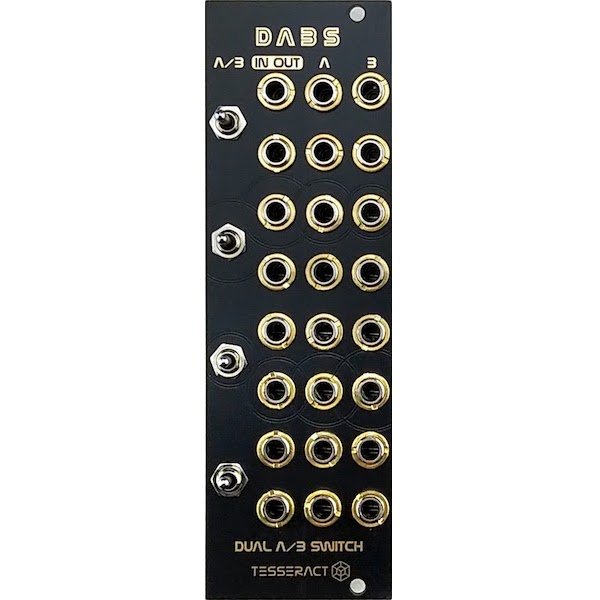 Image 1 of 4
Image 1 of 4

 Image 2 of 4
Image 2 of 4

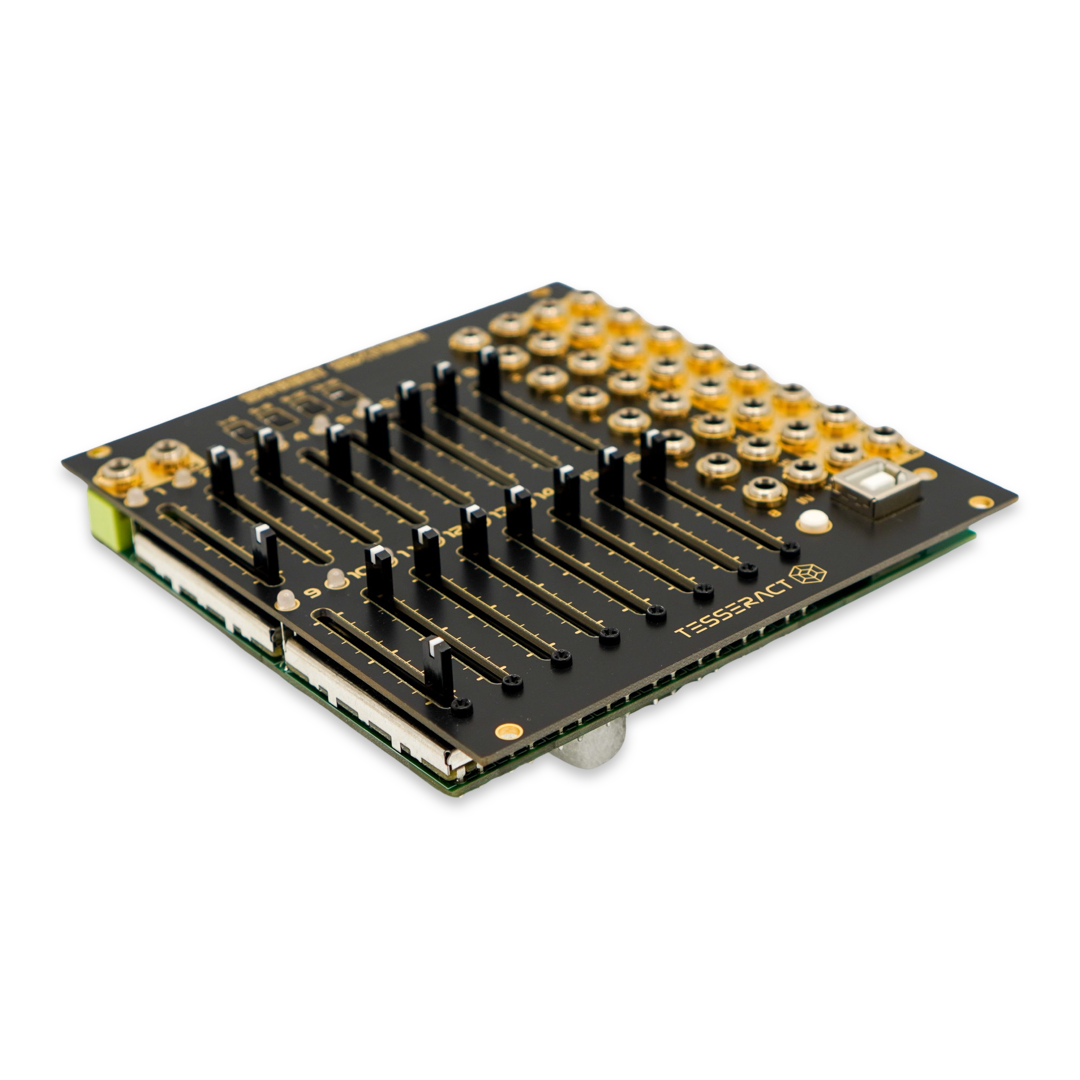 Image 3 of 4
Image 3 of 4

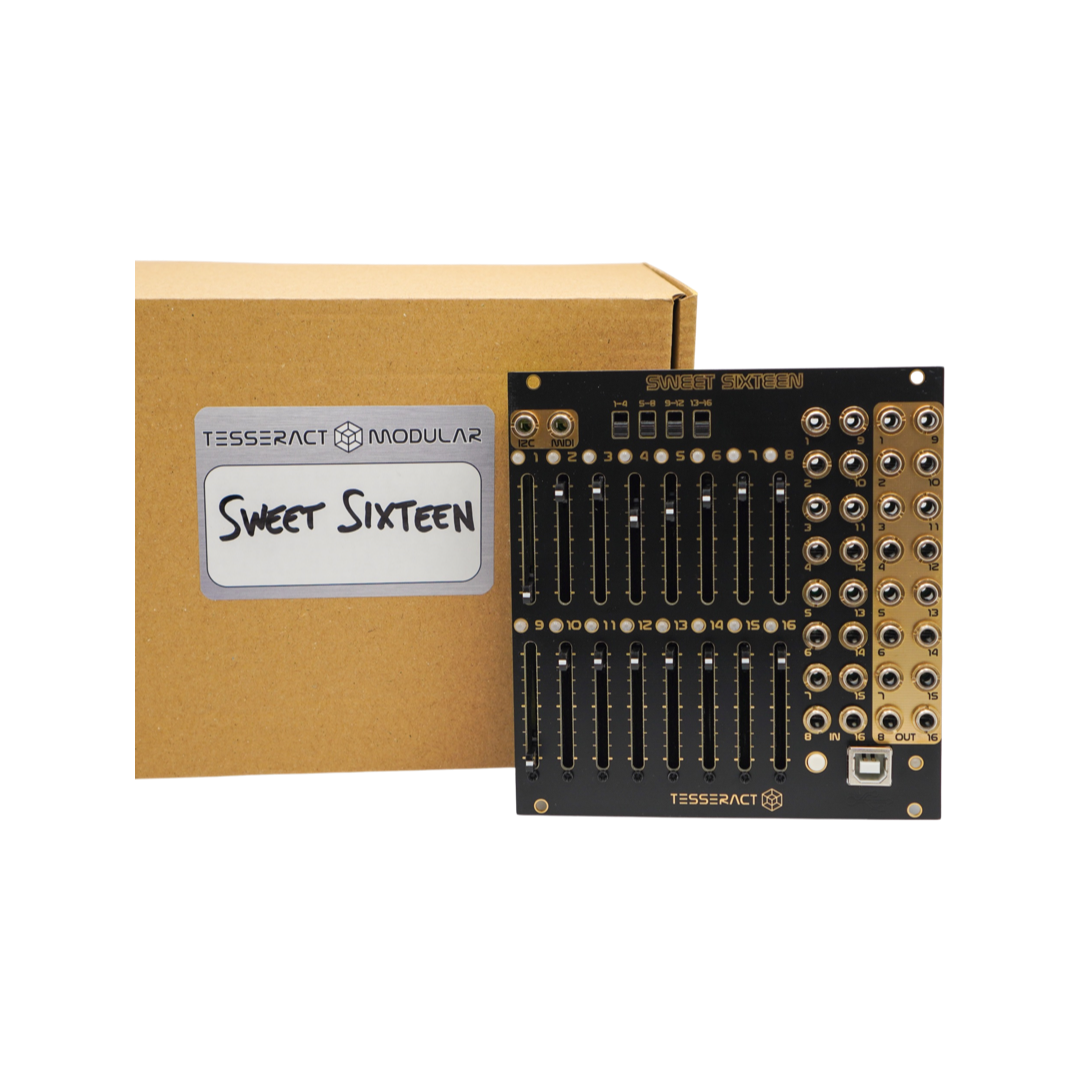 Image 4 of 4
Image 4 of 4





Sweet Sixteen mkII by Tesseract - Faderbank and MIDI/I2C controller
This module is a eurorack version of the 16n Faderbank, implemented with 16 CV inputs and some other smart add ons. Almost everything is in the front panel.
This new version is oriented for firmware tweaks and future expansions, still being fully compatible with the 16n and the previous Sweet Sixteen.
Features:
Midi trs out
Jumpers on the back to swap between 'Arturia/Novation' and 'Korg/Makenoise' Midi trs standards
USB Midi out (usb midi class compliant device)
4 switches to enable bi-polar CV to Midi/i2C conversion (one for every 4 channels)
i2C via mini jack on front panel and pin header on the back of the module.
16 inputs
16 outputs
16 faders
16 bi-color leds to show what's going on in every channel
The Midi CC number and channels can be different for the TRS jack and the USB port. The firmware has been tweaked to allow also Pitch Bend, which is pretty handy because you can get much better resolution through Midi (from min to max values Midi CCs have 128 steps and Pitch Bend has a resolution of 16.384 steps).
Midi CCs, midi channels, fader calibration and i2c master settings can be customized with the web editor.
The voltage generated by every fader is up to 8v, which is good enough to control eurorack modules (like wide open/close the cutoff frequency of a filter etc).
In the midi CC messages, 0 volts will correspond to a value of 0, and 8 volts to a value of 127. But the CV to Midi can handle also negative voltages, for such task there are 4 slide switches (1 for every 4 faders) that swaps the internal voltage reference in a way that, when activated, 0 volts will be the middle position of the midi controller, -4 volts the minimum value and +4 volts the maximum. Those switches only affect the Midi/i2C outs, CV outs won't be affected by them in any way.
If you plug in a bigger voltage source (like a -5v+5v LFO or a 10v envelope) the fader will work as attenuator, so you'll be able to adapt how that signal affects the Midi CC out, covering the whole Midi CC range, saturating the waveform or just affecting it briefly.
Panel USB port is type B, which seems to be stronger than mini or micro ones.
i2C could connect directly to an ER-301, monome Ansible or a monome Teletype.
The Teensy can be powered via the internal regulator or the +5v eurorack rail (selectable via a switch on the back).
Changes from previous versions:
Function push button (for GESS presets)
Function led
Expansion header in the back
i2C pull-up switchable with jumpers (aux pcb not required)
Mate black & gold panel with brass nuts
There are 16 channels, which can be used as:
Midi controller
Manual CV generator (0 to 8v range)
Attenuator
CV to Midi CC
i2C controller
CV to i2C data
This module is a eurorack version of the 16n Faderbank, implemented with 16 CV inputs and some other smart add ons. Almost everything is in the front panel.
This new version is oriented for firmware tweaks and future expansions, still being fully compatible with the 16n and the previous Sweet Sixteen.
Features:
Midi trs out
Jumpers on the back to swap between 'Arturia/Novation' and 'Korg/Makenoise' Midi trs standards
USB Midi out (usb midi class compliant device)
4 switches to enable bi-polar CV to Midi/i2C conversion (one for every 4 channels)
i2C via mini jack on front panel and pin header on the back of the module.
16 inputs
16 outputs
16 faders
16 bi-color leds to show what's going on in every channel
The Midi CC number and channels can be different for the TRS jack and the USB port. The firmware has been tweaked to allow also Pitch Bend, which is pretty handy because you can get much better resolution through Midi (from min to max values Midi CCs have 128 steps and Pitch Bend has a resolution of 16.384 steps).
Midi CCs, midi channels, fader calibration and i2c master settings can be customized with the web editor.
The voltage generated by every fader is up to 8v, which is good enough to control eurorack modules (like wide open/close the cutoff frequency of a filter etc).
In the midi CC messages, 0 volts will correspond to a value of 0, and 8 volts to a value of 127. But the CV to Midi can handle also negative voltages, for such task there are 4 slide switches (1 for every 4 faders) that swaps the internal voltage reference in a way that, when activated, 0 volts will be the middle position of the midi controller, -4 volts the minimum value and +4 volts the maximum. Those switches only affect the Midi/i2C outs, CV outs won't be affected by them in any way.
If you plug in a bigger voltage source (like a -5v+5v LFO or a 10v envelope) the fader will work as attenuator, so you'll be able to adapt how that signal affects the Midi CC out, covering the whole Midi CC range, saturating the waveform or just affecting it briefly.
Panel USB port is type B, which seems to be stronger than mini or micro ones.
i2C could connect directly to an ER-301, monome Ansible or a monome Teletype.
The Teensy can be powered via the internal regulator or the +5v eurorack rail (selectable via a switch on the back).
Changes from previous versions:
Function push button (for GESS presets)
Function led
Expansion header in the back
i2C pull-up switchable with jumpers (aux pcb not required)
Mate black & gold panel with brass nuts
There are 16 channels, which can be used as:
Midi controller
Manual CV generator (0 to 8v range)
Attenuator
CV to Midi CC
i2C controller
CV to i2C data




